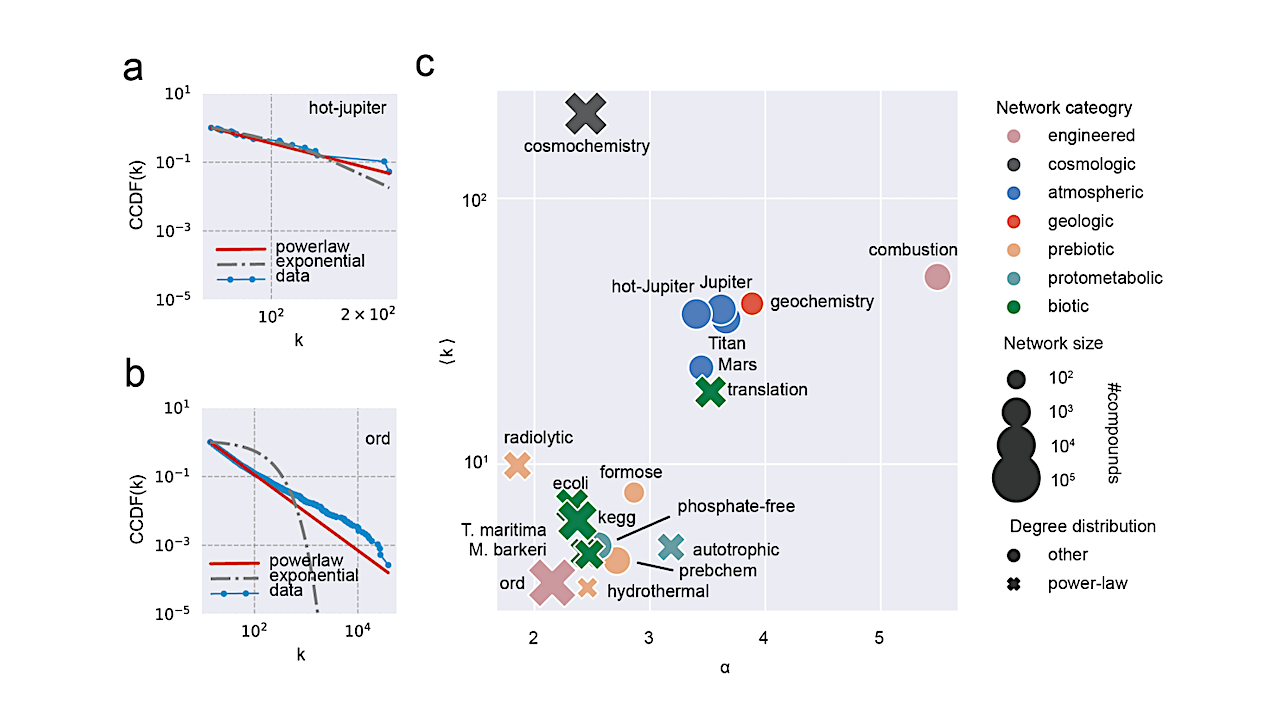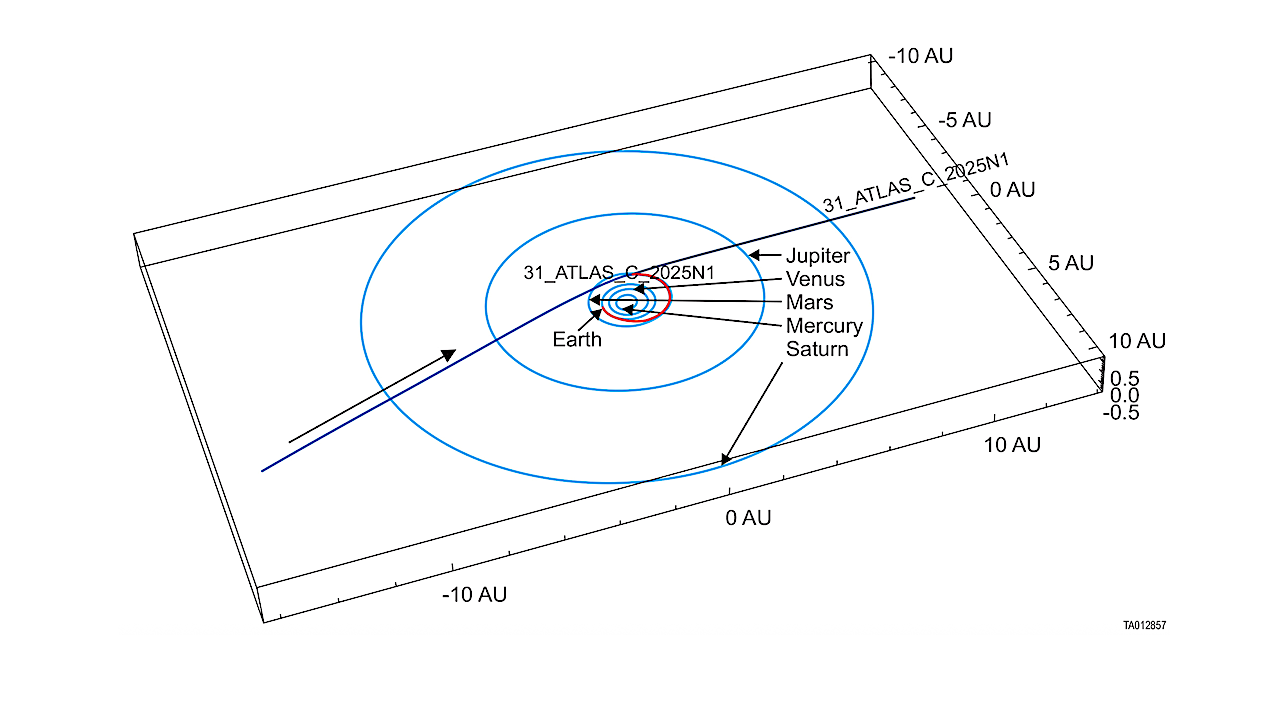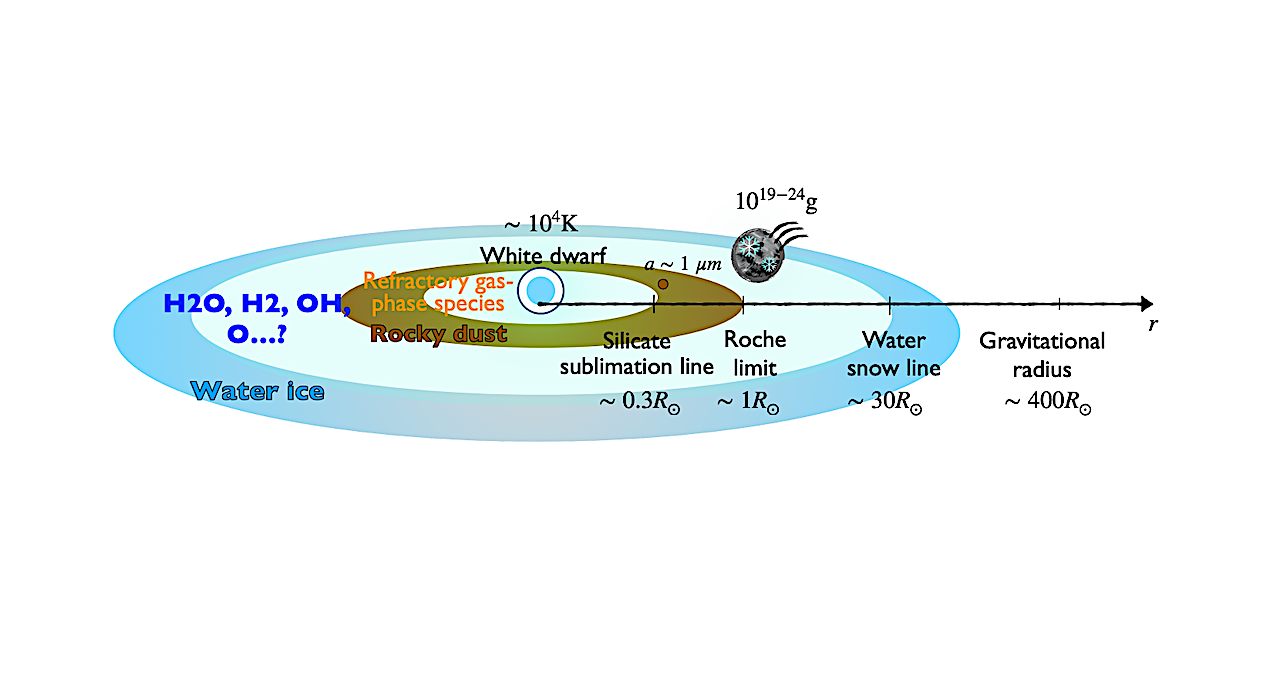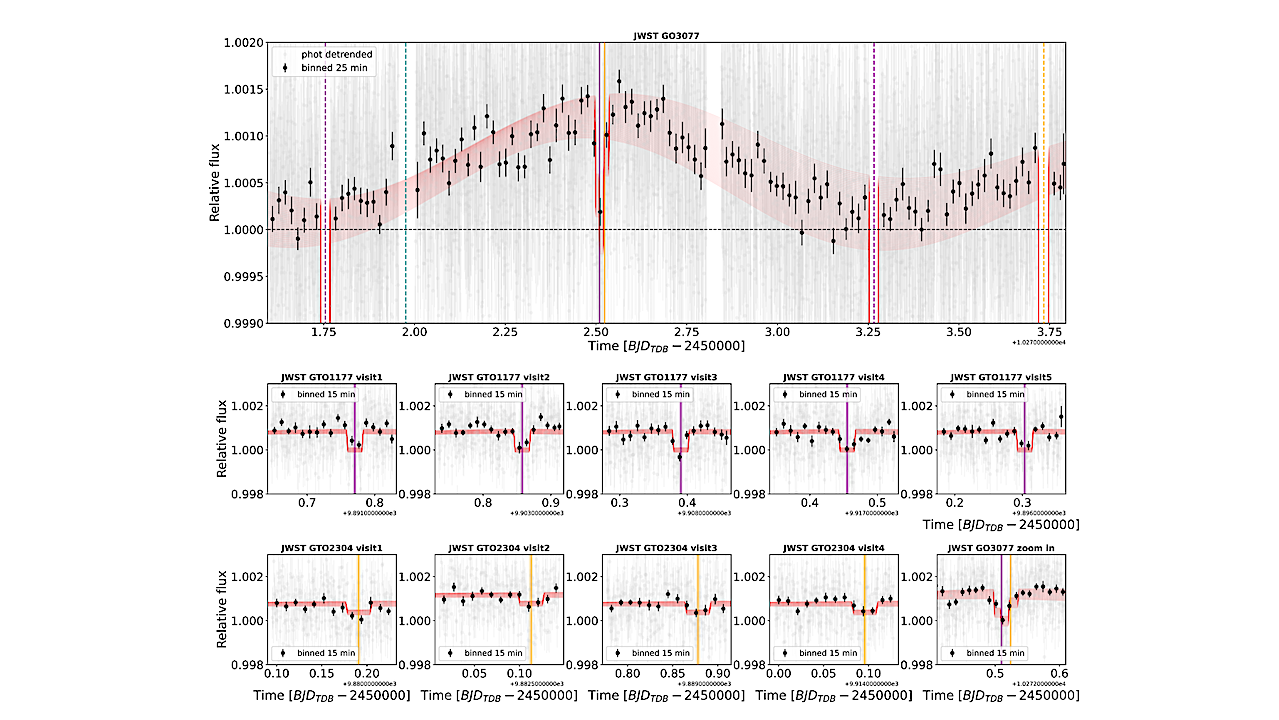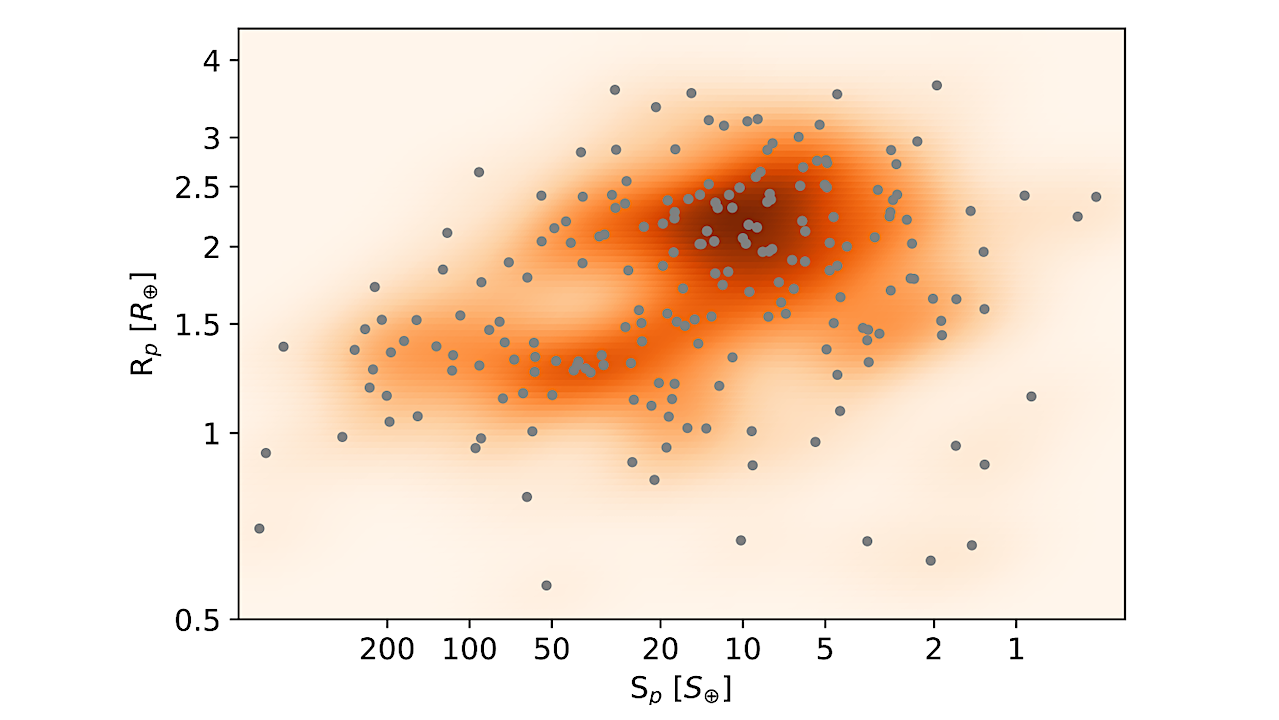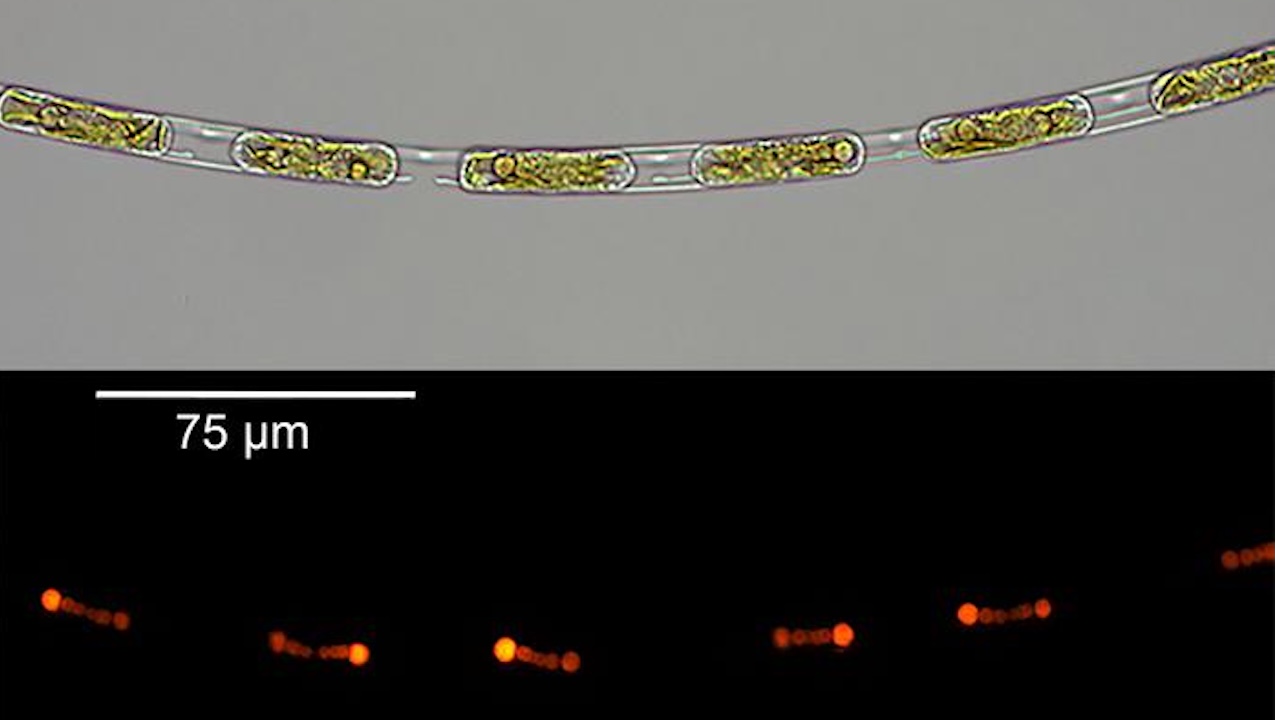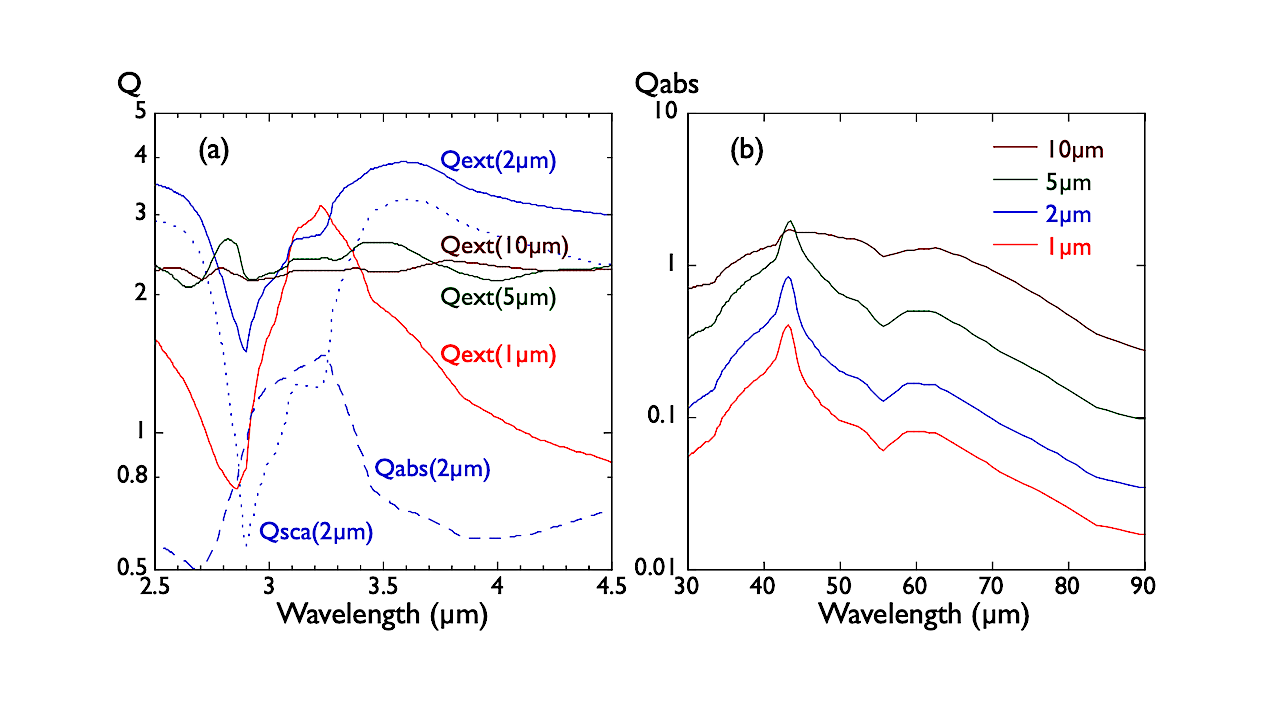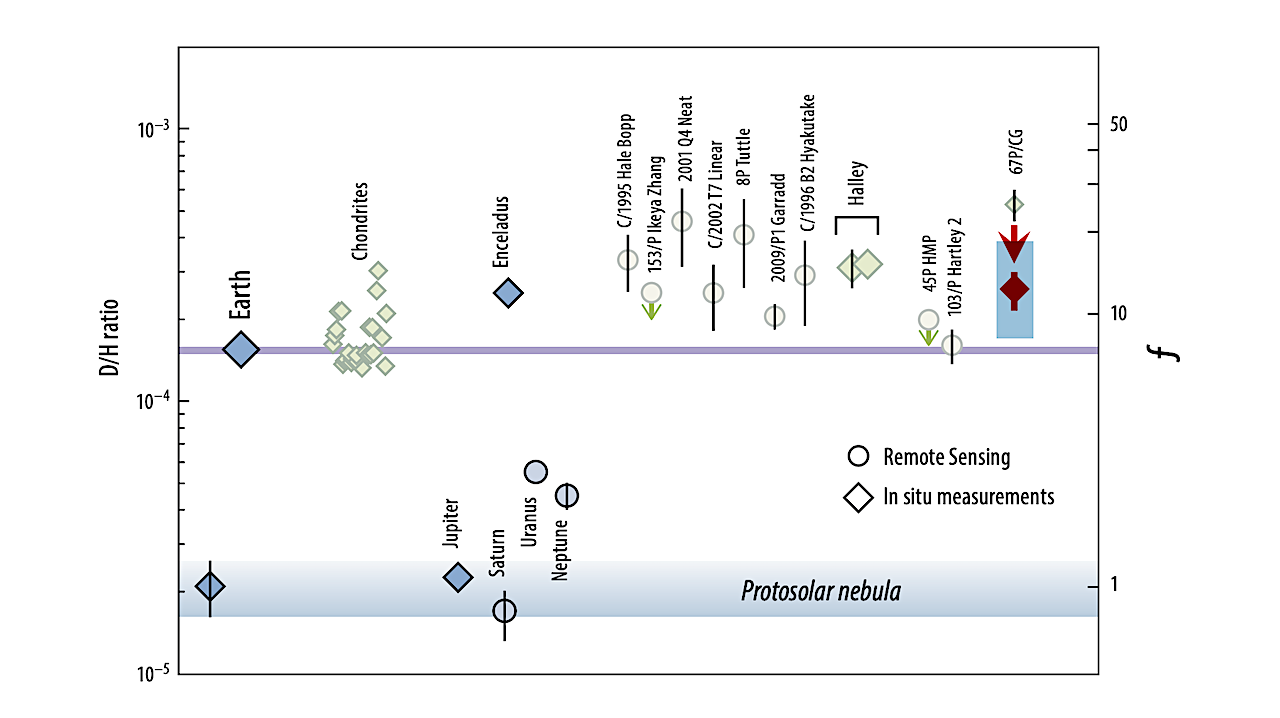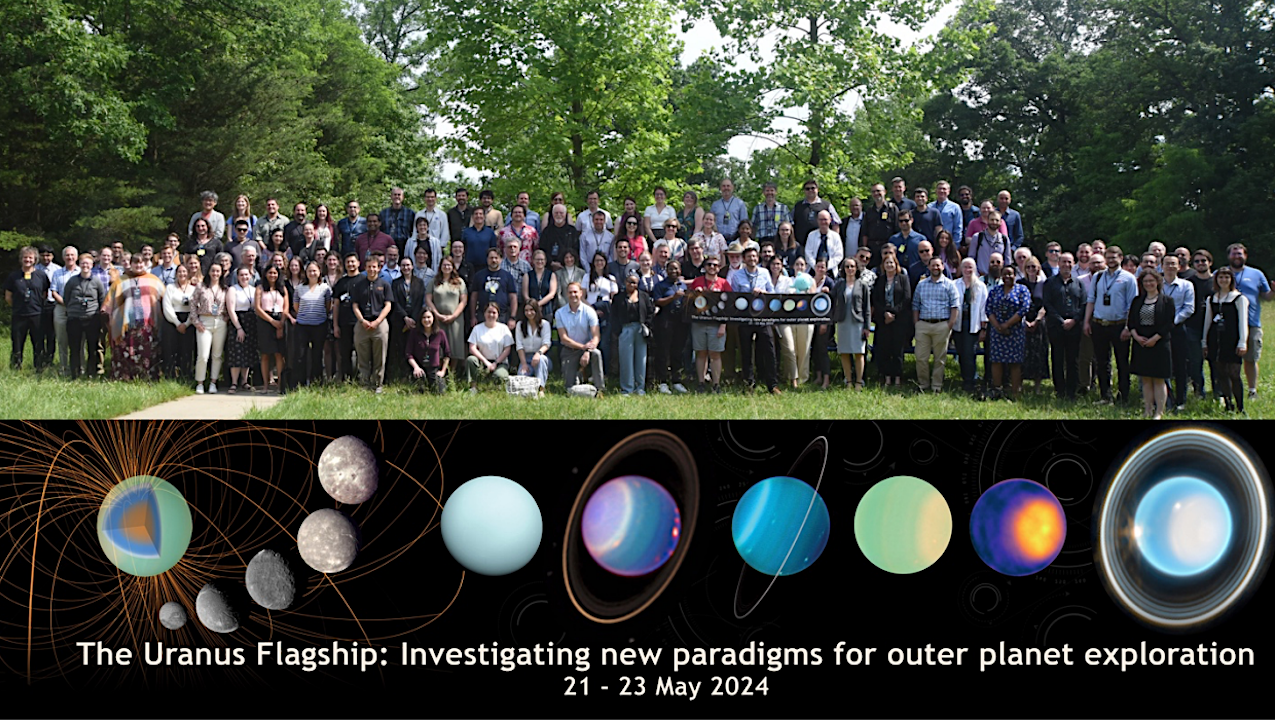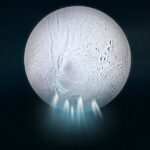Tricorders & Sensors Status Report biorxiv.org September 3, 2025 Heterogeneous degree distributions. a) The Hot Jupiter chemical reaction network’s degree distributions are represented by its complementary cumulative density function (CCDF)
Astrobiology32- Page
3I/ATLAS Trajectory — SwRI Southwest Research Institute (SwRI) has completed a mission study detailing how a proposed spacecraft could fly by an interstellar comet, providing remarkable insights into the properties
Schematic showing the distribution of the modeled volatile gas (e.g., water vapor) disk and water ice disk around a WD. The rocky dust disk and their observationally inferred properties are
Range of best-fit phase curve and eclipse models for TRAPPIST-1 b and c. The detrended data are shown with gray dots and binned data with black dots. Red curves show
Distribution of the derived planetary radii as a function of insolation, along with the associated KDE. — astro-ph.EP Planetary radii are derived for 218 exoplanets orbiting 161 M dwarf stars.
Chain of the symbiotic diatom with its N2 fixing cyanobacterial symbiont. In the brightfield (top) the symbiont is inconspicuous inside the host, whereas with epi-fluorescence (bottom) the filaments of the
Efficiency factors of crystalline ice grains with carbon inclusions for grain radii of 1 (red), 2 (blue), 5 (green), and 10 µm (brown). The inclusion fraction is set as 0.1.
D/H ratio in Solar System objects. Comets exhibit large variations between 1 and 3 times Vienna Standard Mean Ocean Water (VSMOW). The red diamond and arrow mark the revised value
The abstract in PubMed or at the publisher’s site is linked when available and will open in a new window. McGregor HR, Hupfeld KE, Pasternak O, Beltran NE, De Dios
Uranus Flagship Workshop — astro-ph.IM This white paper is a summary of the Uranus Flagship Workshop that took place 21 to 23 May 2024 at NASA’s Goddard Space Flight Center.
-
 012024 in Review: Highlights from NASA in Silicon Valley
012024 in Review: Highlights from NASA in Silicon Valley -
 02Panasonic Leica Summilux DG 15mm f/1.7 ASPH review
02Panasonic Leica Summilux DG 15mm f/1.7 ASPH review -
 03How New NASA, India Earth Satellite NISAR Will See Earth
03How New NASA, India Earth Satellite NISAR Will See Earth -
 04And Thus Begins A New Year For Life On Earth
04And Thus Begins A New Year For Life On Earth -
 05Astronomy Activation Ambassadors: A New Era
05Astronomy Activation Ambassadors: A New Era -
06SpaceX launch surge helps set new global launch record in 2024
-
 07Space Force plans new ‘Futures Command’ amid pressure to speed up modernization
07Space Force plans new ‘Futures Command’ amid pressure to speed up modernization


